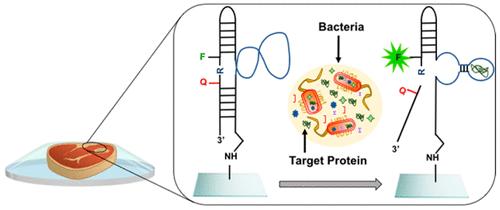
The 'smart' packaging uses molecules containing snippets of DNA that specifically target E. coli. The technology also uses DNA that makes molecules shine with a fluorescent light, which won't appear until the molecules come into contact with the bacteria. The development involves a transparent, durable, and flexible sensing surface that generates a fluorescence signal in the presence of a specific target bacterium. This material can be used in packaging, and it is capable of monitoring microbial contamination in various types of food products in real time without having to remove the sample or the sensor from the package. This can detect E. coli in meat and apple juice at concentrations as low as 103 CFU/mL. The developed biosensors are stable for at least the shelf life of perishable packaged food products and provide a packaging solution for real-time monitoring of pathogens.






